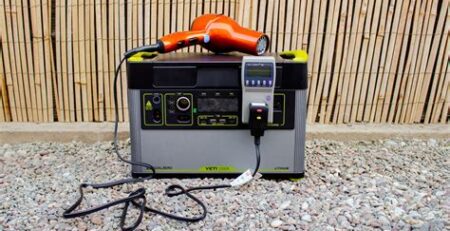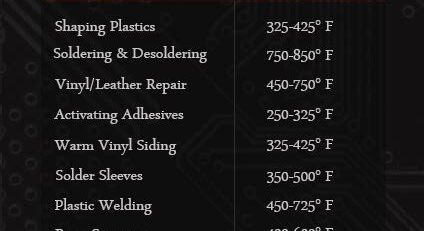Common Bench Grinder Problems and How to Fix Them
Are you experiencing issues with your bench grinder? It can be frustrating when you’re in the middle of a project and your grinder isn’t working as it should. In this blog post, we’ll discuss some common bench grinder problems and provide you with solutions to fix them. Whether your grinder is not turning on, running at a slow speed, vibrating excessively, producing uneven grinding results, or overheating and risking motor burnout, we’ve got you covered. By understanding the potential problems and learning how to troubleshoot them, you can keep your bench grinder in top working condition and ensure that it’s always ready to tackle your next DIY or professional project. Join us as we dive into the world of bench grinder maintenance and repair, and say goodbye to those frustrating issues once and for all.
Grinder not turning on
Have you ever experienced the frustration of your grinder not turning on when you need it the most? This can be a very common problem for many grinder users, but there are a few potential reasons for this issue.
Firstly, it could be a problem with the power supply. Check to make sure that the grinder is properly plugged in and that the power outlet is working. Sometimes, a simple fix like plugging the grinder into a different outlet can solve the issue.
Secondly, the grinder may not be turning on due to an overload or overheating issue. Many grinders are equipped with a safety feature that prevents them from turning on if they are overheated or overloaded. In this case, allow the grinder to cool down for a while before attempting to turn it on again.
Lastly, there may be an issue with the grinder’s motor or internal wiring. If none of the above solutions work, it may be time to consult a professional for further inspection and potential repairs.
Slow rotating speed
Have you noticed that your grinder is operating at a slow rotating speed? This issue can be frustrating, especially when you’re trying to grind your coffee beans or spices. There are a few potential reasons for this problem, and it’s important to troubleshoot in order to find a solution.
One possible cause of a slow rotating speed is a worn-out motor. Over time, the motor of your grinder can become less efficient, leading to a decrease in speed. Another common issue is a defective power supply. If the power source to your grinder is faulty, it can affect the speed at which the blades rotate.
Additionally, a build-up of debris around the blades can also hinder their ability to rotate at the proper speed. It’s important to regularly clean your grinder to prevent this from happening. Finally, a faulty or worn-out gearbox can also be the culprit behind a slow rotating speed.
If you’re experiencing this issue with your grinder, it’s important to address it as soon as possible. Ignoring a slow rotating speed can lead to further damage to your grinder and may result in a complete breakdown. By identifying the root cause of the problem, you can take the necessary steps to resolve it and get your grinder operating at its optimal speed once again.
Excessive vibration during operation
Experiencing excessive vibration during the operation of your grinder can be frustrating and indicate an underlying issue with the equipment.
Whether you have a bench grinder or a handheld angle grinder, excessive vibration can be a sign of an unbalanced wheel, a damaged spindle, or even a motor problem.
One of the first steps to troubleshoot excessive vibration is to check the condition of the grinding wheel. Make sure it is properly secured and not damaged. If the wheel is worn or has uneven wear, it can cause excessive vibration during operation.
Additionally, inspect the spindle and bearings for any signs of wear or damage. If the spindle or bearings are worn, it can lead to instability during operation, resulting in excessive vibration.
Uneven grinding results
When you use your grinder for coffee or spices, you expect to get consistently ground particles of the same size. However, if you are experiencing uneven grinding results, it can be frustrating and affect the taste of your coffee or the quality of your spices. There are several reasons why you may be getting uneven grinding results with your grinder.
One possible reason for uneven grinding results is that the blades or burrs in your grinder are not properly aligned. Over time, these components can become misaligned, leading to inconsistent particle size. Another potential cause could be that the grinding chamber is dirty or clogged, which can also result in uneven grinding. Additionally, if your grinder is old or worn out, the blades or burrs may be dull, leading to inconsistencies in the grinding process.
To address uneven grinding results, you can start by cleaning your grinder thoroughly to remove any buildup or residue that may be causing the issue. You can also check the alignment of the blades or burrs and make any necessary adjustments to ensure they are properly positioned. If your grinder is old or worn, it may be time to consider replacing the blades or burrs to improve the consistency of the grinding results.
Overall, uneven grinding results can be frustrating, but by understanding the potential causes and taking the appropriate steps to address them, you can improve the performance of your grinder and achieve the consistent grinding results you desire.
Overheating and motor burnout
One of the most common issues that can occur with a grinder is overheating and motor burnout. When the grinder is used for extended periods of time without breaks, the motor can become overheated, leading to potential damage and burnout. This can be caused by a variety of factors, including overloading the grinder with too much material, using the grinder at a higher speed than recommended, or even just normal wear and tear on the motor over time.
It’s important to monitor the temperature of the grinder while in use, and to allow the motor to cool down periodically to prevent overheating. If the grinder is showing signs of overheating, such as a burning smell, unusually hot motor, or automatic shut-off, it’s important to immediately turn off the grinder and allow it to cool down before continuing use.
In addition to overheating, motor burnout can also occur due to lack of maintenance, including failure to lubricate moving parts, clean debris from the motor housing, or replace worn out components. It’s important to regularly inspect and maintain the grinder to prevent motor burnout and ensure its longevity.
By following proper usage guidelines, monitoring the grinder’s temperature, and maintaining the motor, you can prevent overheating and motor burnout and keep your grinder in top operating condition.
Frequently Asked Questions
Why is my bench grinder not turning on?
There could be several reasons for this issue, including a faulty power cord, a defective switch, or a malfunctioning motor. It’s important to check each of these components to determine the root cause of the problem.
What should I do if my bench grinder has a slow rotating speed?
A slow rotating speed could be due to a variety of factors such as a worn-out motor, a loose or damaged drive belt, or a buildup of debris in the grinding wheel. It’s recommended to inspect and replace any worn or damaged parts to resolve this issue.
How can I fix excessive vibration during operation of my bench grinder?
Excessive vibration could be caused by an out-of-balance grinding wheel, a damaged arbor or spindle, or improper mounting. You should carefully inspect and correct these issues by dressing or replacing the grinding wheel, repairing or replacing the arbor or spindle, and ensuring proper mounting and balancing.
What may be causing uneven grinding results on my bench grinder?
Uneven grinding results may be the result of a dulled or clogged grinding wheel, an improperly adjusted tool rest, or a misaligned workpiece. Addressing these issues by cleaning or replacing the grinding wheel, adjusting the tool rest, and properly aligning the workpiece can help achieve more uniform grinding results.
How can I prevent overheating and motor burnout on my bench grinder?
Overheating and motor burnout can occur due to excessive pressure applied to the grinding wheel, prolonged operation without breaks, or insufficient lubrication. To prevent these issues, it’s important to use light and even pressure when grinding, take regular breaks to allow the motor to cool down, and ensure proper lubrication of moving parts.













Leave a Reply